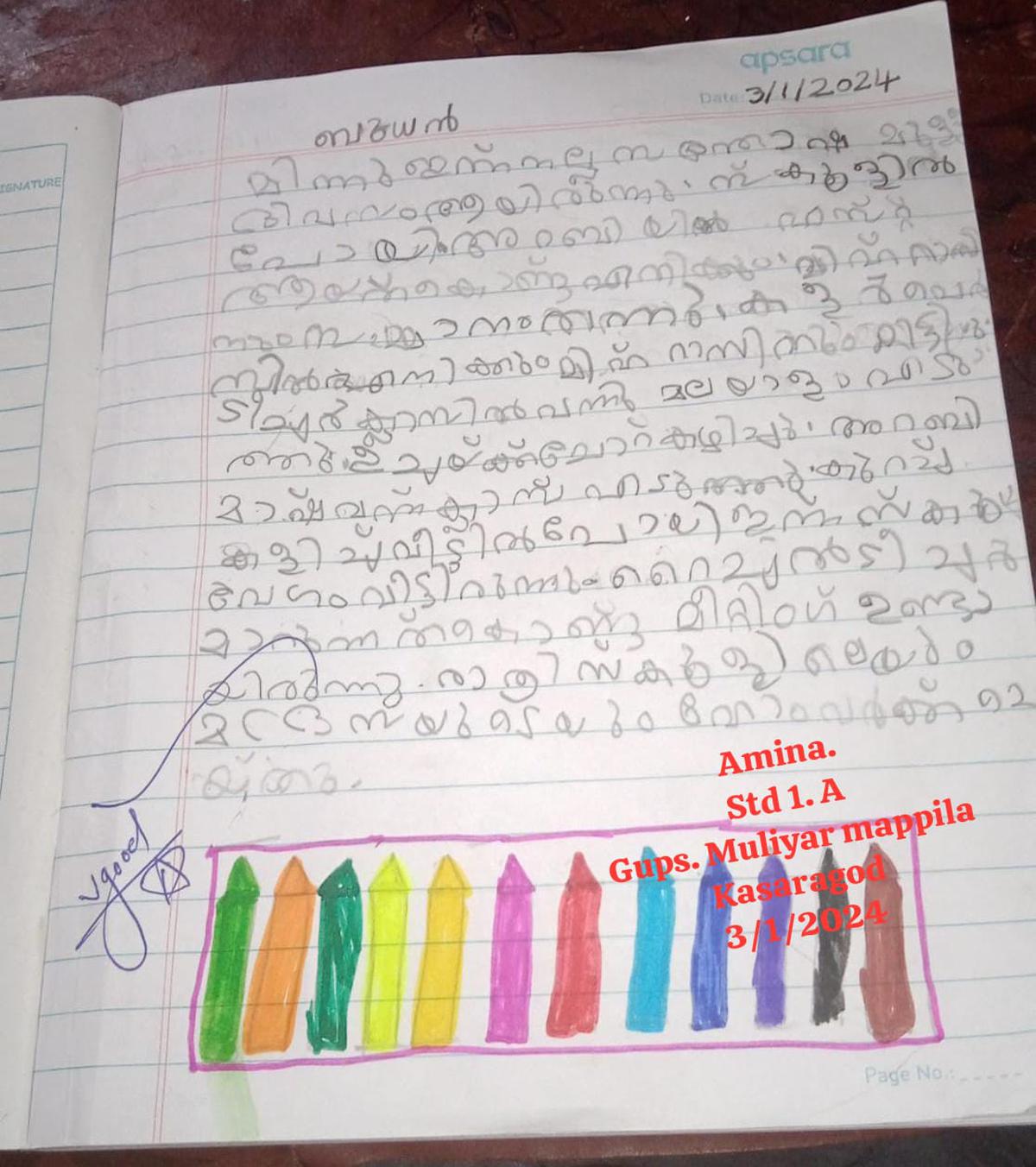Samyuktha diary entries of a Kasaragod Class I student in July and in January this year show the transformation in her grasp of Malayalam.
At Government Upper Primary School, Vadakkumkara, Thrissur district, a second-term examination question in Malayalam gave a model of ‘Samyuktha diary’ that the students of Class I and II in State schools write at home (with parents stepping in using a different-coloured pen if required) and wanted them to write in a similar fashion about one experience from the day before. Since the examinations were on, many students referenced those. One, though, wrote about how sad he became when he touched his pregnant mother’s belly and failed to sense any movement of his unborn sibling, but the foetus moved when his mother did the same. The six-year-old was able to express himself independently in response to the question, without any prompting from the teacher or regurgitating what had been taught in class.
Justeena Jose, teacher of the Class I student, mentions another girl in her class whose Samyuktha diary in the second term was near flawless.

At a time when inclusion of the Malayalam alphabets in school textbooks and demands to teach it have been making headlines, the Sachithra (illustrated notebook) notebook and Samyuktha diary have been able to make a significant difference in Class I and Class II students’ grasp and command of Malayalam, say officials of the Samagra Shiksha, Kerala that is implementing the initiative at the field level (the Sachithra module has been developed by the State Council of Educational Research and Training).
Ms. Jose says a classroom of first graders may have children who have attended kindergarten, those who went to anganwadis, those who never had any preschool experience, children of migrant workers, and the differently abled too as part of inclusive education. Beginning lessons with the textbook may not be easy at least for some of them. It is here that the Sachithra notebook comes in handy, for it first introduces children to a letter and then provides them with various situations and contexts in their immediate surroundings where the alphabet is used so that they can become familiar with it, recall it, identify it in words, and understand its use.
Dual purpose
The Sachithra (illustrated) notebook was introduced at the beginning of this year to use students’ artistic talents for language development and the Samyuktha diary to ensure parents’ academic support to a child. The current textbook forms the basis for the Sachithra notebook, which is seen as an interim, evolving text where drawing and craft are used to enhance students’ vocabulary and help them ease into reading and understanding the textbook.
Emphasis is on recurring use, not repetition, say SSK officials. They point out that this eliminates the drudgery of copying letters or words as was done in the past, challenges the students, engages them in art, song, and dance, and improves their psychomotor skills. Individual attention to students is also ensured.
The Sachithra textbook and diary have increased students’ confidence a lot. This is evident from the transformation in the diary entries from the first term to the second term. So encouraging have been the results that the SSK gave the schools ₹500 to publish their best diaries so that diary entries of a specific peer group were ready in book form. Recently, a student’s diary in Chathannur in Kollam that was brought out by a private publisher was used to receive the Chief Minister at a Navakerala Sadas, say SSK officials.